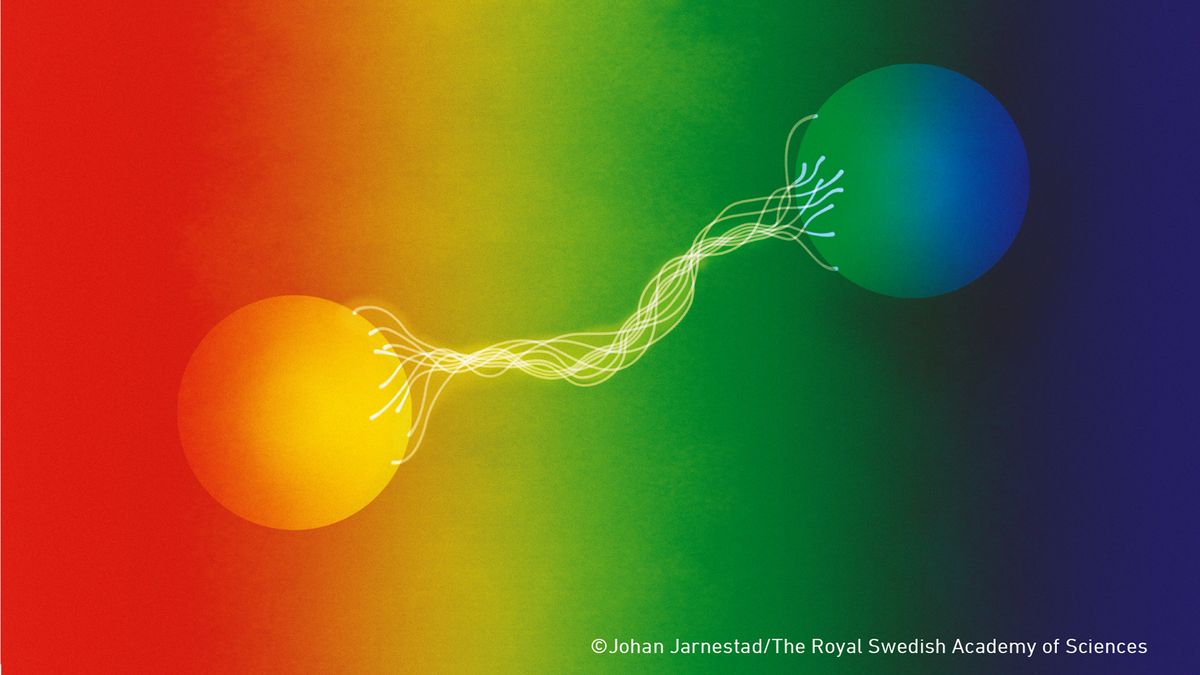Let's Master AI Together!
AI Breakthrough Simplifies Einstein's 'Spooky Action at a Distance'
Written by: Chris Porter / AIwithChris

Image source: Future Publishing
The Quantum Leap: AI in the World of Physics
For years, the realm of quantum physics has been shrouded in complexity, with concepts like quantum entanglement often described as 'spooky action at a distance.' This phenomenon, famously highlighted by Einstein, has captivated scientists and researchers, primarily because it ventures beyond our classical understanding of physics. Recent breakthroughs, however, are paving the way for a more straightforward approach to achieving this mind-boggling phenomenon, significantly aided by advancements in artificial intelligence (AI).
Researchers recently published a paper in Physical Review Letters detailing a groundbreaking method to produce quantum entanglement using the AI tool known as PyTheus. The team's initial goal was to replicate existing protocols for entanglement swapping—essentially the techniques already established in quantum communication. Yet, the AI demonstrated its prowess in suggesting a more elegant solution, one that could bring quantum internet technologies closer to practical implementation.
From Complexity to Simplicity
Quantum entanglement can be described as a relationship between particles where the state of one instantly influences the state of another, regardless of the distance separating them. Traditional methods of achieving this relationship required complicated setups and highly controlled environments, often hindered by environmental noise and the intricacies involved in measuring outcomes.
The innovative aspect of the recent discovery lies in the AI's proposal that entanglement could arise when the paths of photons—light particles—become indistinguishable. By tweaking the experimental parameters so that the sources of the photons were indistinguishable, the researchers created favorable conditions. Detecting certain photons in specified paths assured that the remaining two photons emerged entangled.
This method significantly simplifies the entanglement process, allowing researchers to focus on achieving quantum states that are essential for a variety of applications in quantum technologies. Such applications extend beyond quantum internet and delve into secure messaging systems, quantum computing, and more. The implications here demonstrate not just a technical evolution but also a shift in how researchers approach quantum research through the help of AI.
The Quantum Internet: A Bright Future
The significance of achieving quantum entanglement more efficiently cannot be overstated. As scientists continue to enhance the development of quantum networks, the aim is to create a quantum internet that has the potential to revolutionize how we communicate. This hypothetical network would provide the backbone for ultra-secure communications through quantum key distribution, harnessing the unpredictable nature of quantum mechanics.
However, it is important to recognize that scaling this technology into commercially viable solutions presents various challenges. Environmental noise and device imperfections still pose barriers in the practical application of these quantum networks. Nevertheless, this recent AI-powered breakthrough suggests promising strategies to overcome these obstacles.
Importantly, this research underscores the transformative potential of AI as a powerful aid in scientific inquiry. It not only signifies a pivotal moment in quantum physics but also marks a step forward in integrating AI into research methodologies.
Advancements in Quantum Computing
Beyond enhancing quantum communication, this AI breakthrough also holds implications for quantum computing. Specifically, the newfound understanding of entangled states can contribute to the stability and scalability of quantum computing systems. As reliable entangled states become more accessible, it provides the foundational element necessary for building robust and efficient quantum processors.
Moreover, the potential for improved error correction methods in quantum computing becomes a tangible reality with this newly simplified approach to handling entanglement. Error correction is a significant hurdle that most quantum systems face; decoherence caused by external interference can lead to the rapid loss of quantum information. By gaining finer control over entanglement processes, researchers can effectively mitigate these issues, ultimately paving the way for operational quantum computers.
Future Directions and Conclusions
Looking ahead, the intersection of quantum physics and artificial intelligence presents a wealth of opportunities for future research. With simplified protocols for achieving entanglement, researchers can allocate more resources toward practical applications and innovations in quantum information science. The quest for a functional, reliable quantum internet is closer than ever, thanks to the pioneering work of scientists willing to integrate AI into their research processes.
Ultimately, as more discoveries like this arise, the conversation about the role of AI in scientific research will only grow louder. While challenges in scaling this technology still exist, the successful use of AI to simplify quantum mechanics demonstrates a remarkable point: AI is soon to become an indispensable tool in the physicist's toolkit.
In Conclusion
The potential of quantum technologies has captivated scientists and innovators across various fields. With the advent of AI-driven research methods, achieving quantum entanglement is now more accessible, presenting exciting opportunities for future developments like a practical quantum internet and enhanced quantum computing.
If you want to dive deeper into the fascinating world of AI, quantum technologies, and their implications, visit AIwithChris.com for more insights and updates!
_edited.png)
🔥 Ready to dive into AI and automation? Start learning today at AIwithChris.com! 🚀Join my community for FREE and get access to exclusive AI tools and learning modules – let's unlock the power of AI together!
